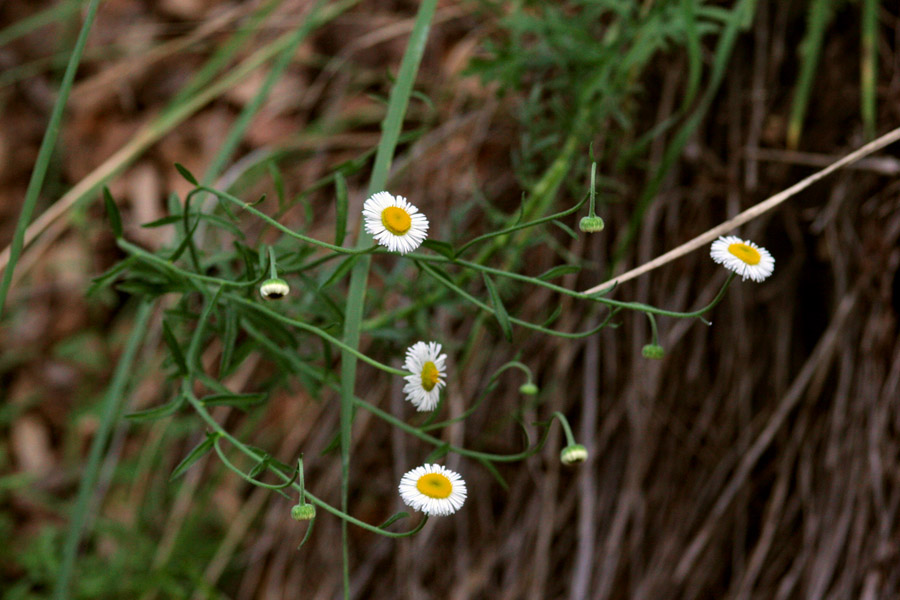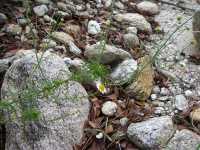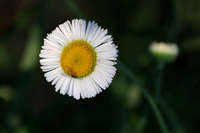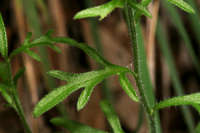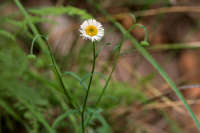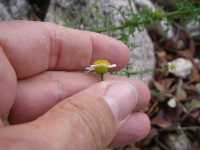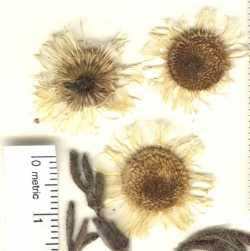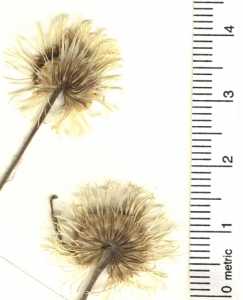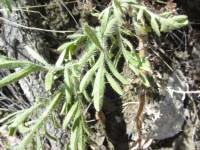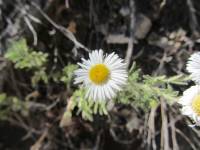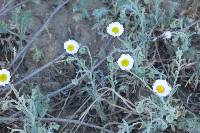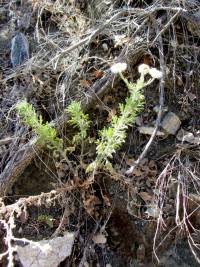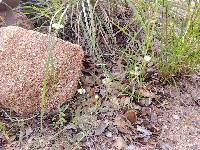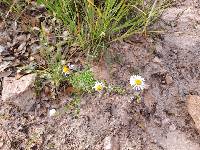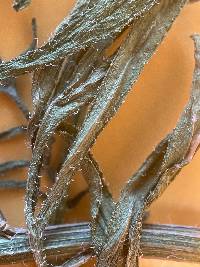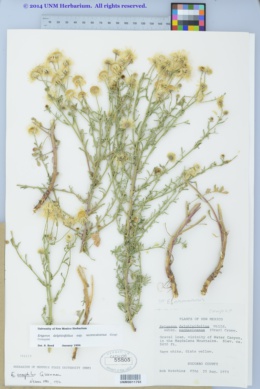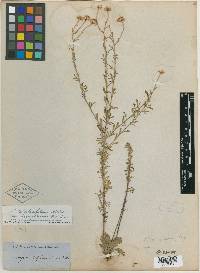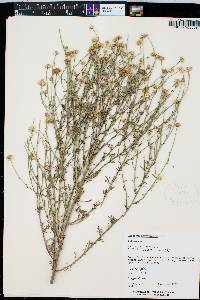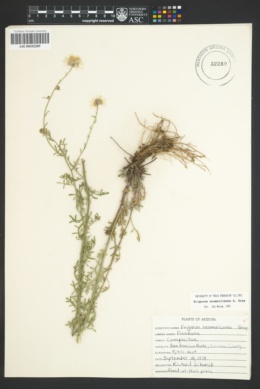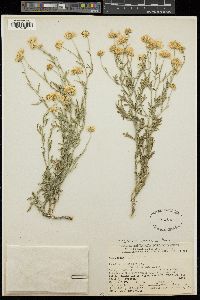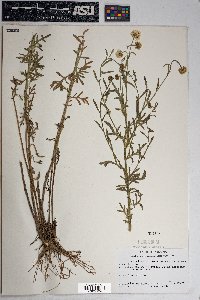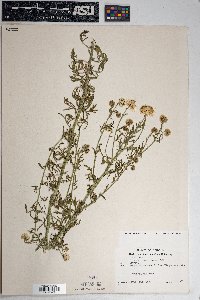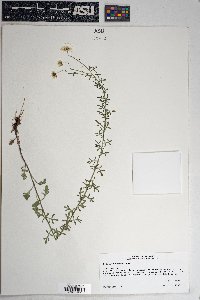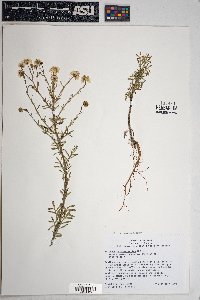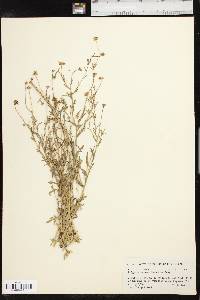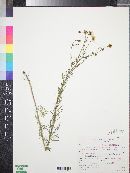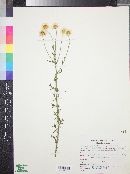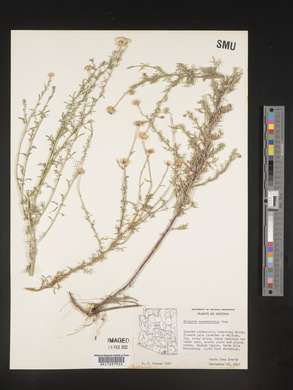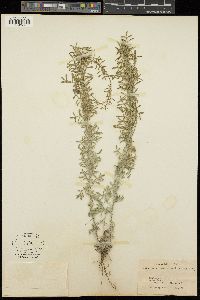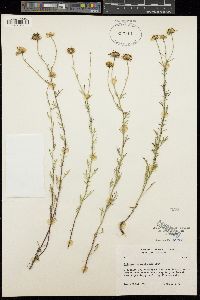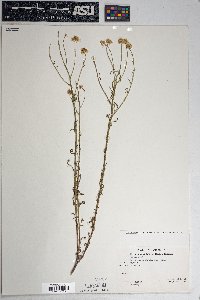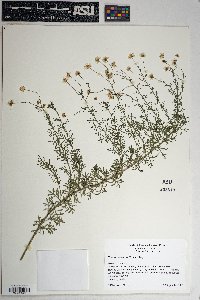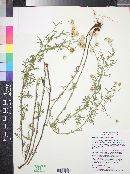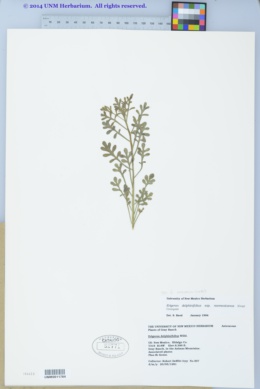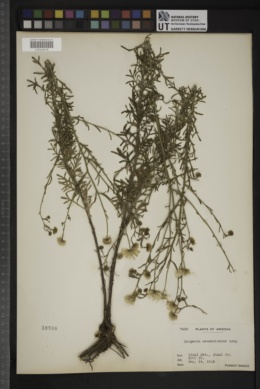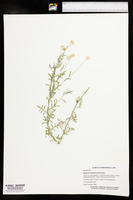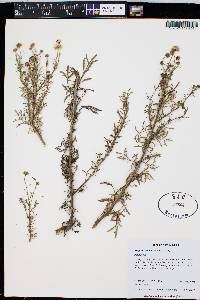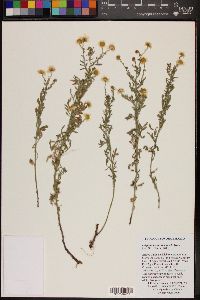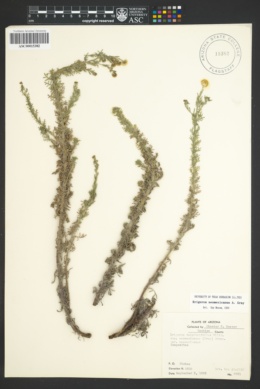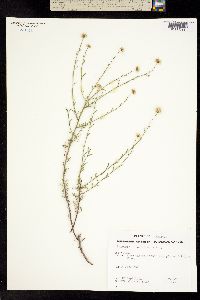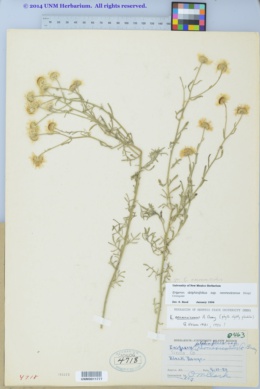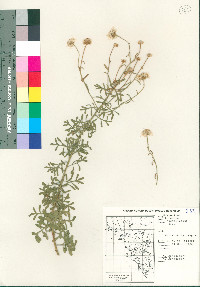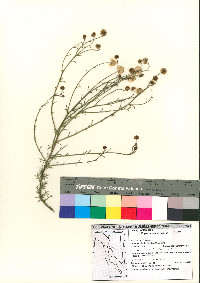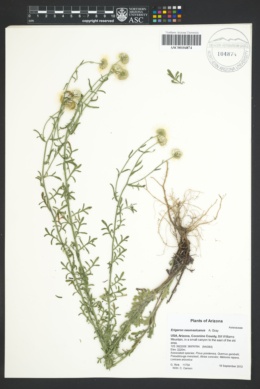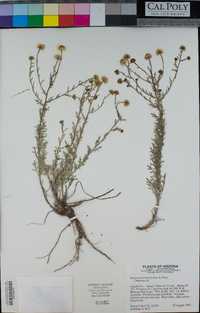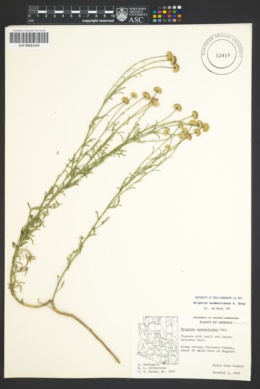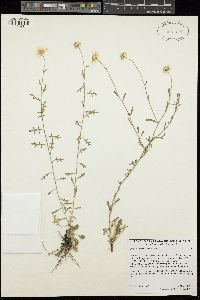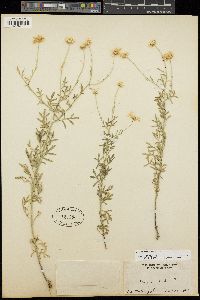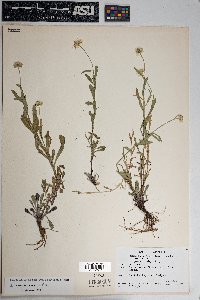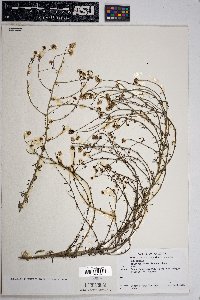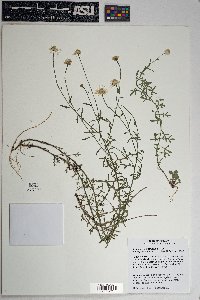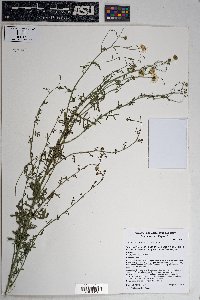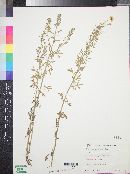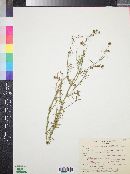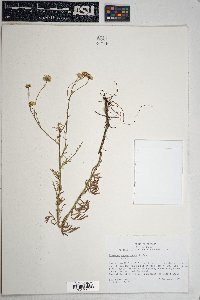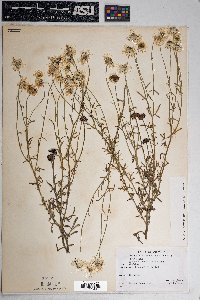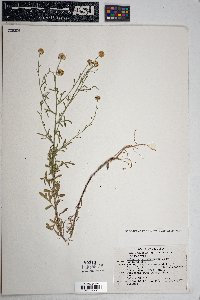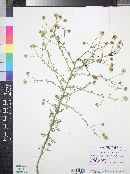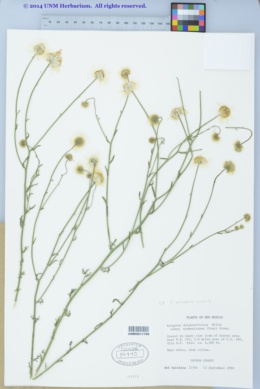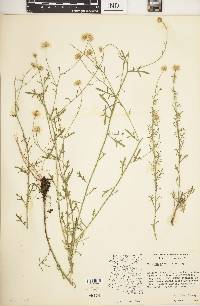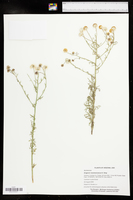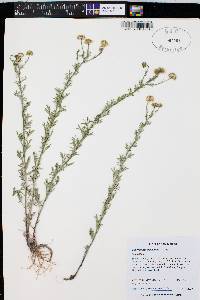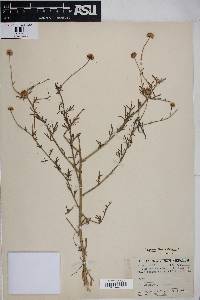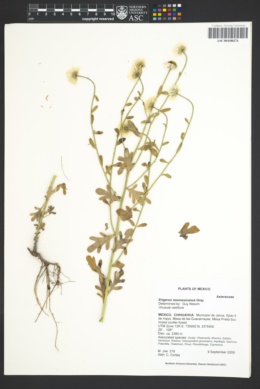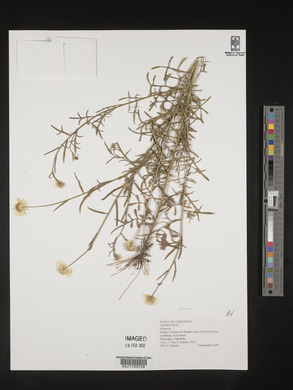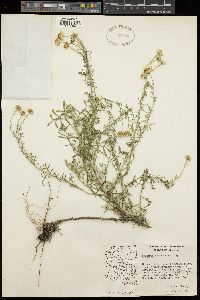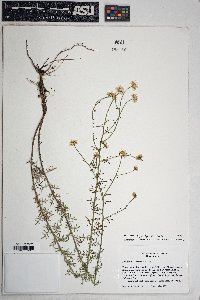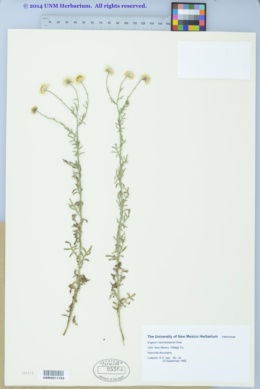Erigeron neomexicanus
|
|
|
|
Family: Asteraceae
New Mexico Fleabane, more...oakbelt daisy
[Achaetogeron sophiaefolius, moreErigeron delphiniifolius subsp. neomexicanus (A. Gray) Cronq., Erigeron delphiniifolius var. euneomexicanus Cronq.] |
Perennials, 20-70 cm; taprooted, caudices woody. Stems erect, moderately to densely strigose (hairs appressed to ascending, 0.1-0.8(-2) mm, sometimes spreading at bases or throughout), eglandular or glands minute, non-capitate. Leaves basal (sometimes persistent) and cauline; blades oblanceolate, margins usually deeply pinnatifid (lobes in 2-5 pairs), sometimes dentate to entire, faces strigose, eglandular; basal 10-60 × 6-35 mm, cauline gradually reduced distally. Heads (1-)5-15(-30) in loosely corymbiform arrays. Involucres 3.5-5 × 7-12 mm. Phyllaries in 3-4 series, strigose to hirsute (hairs arising mostly from midregion), usually minutely glandular, rarely eglandular. Ray florets 70-150; corollas white, drying white, (2-)6-15 mm, laminae reflexing. Disc corollas 2.5-3.3 mm (throats somewhat white-indurate, not inflated). Cypselae 1-1.3 mm, 2(-4)-nerved, faces sparsely strigose; pappi: (outer 0) inner (readily falling) of (8-)10-12 bristles. 2n = 18, 36. Flowering (Jul-)Aug-Oct(-Dec). Open, rocky sites, from grasslands into oak or pine woodlands, often with madrono, juniper, or fir; (900-)1500-2700(-3000) m; Ariz., N.Mex.; Mexico (Chihuahua, Sonora). Relatively large, pinnatifid leaves are typical of Erigeron neomexicanus; plants with nearly entire leaves can be identified by the strongly perennial habit, white, reflexing rays, and 10-12 readily falling pappus bristles. Erigeron neomexicanus and E. oreophilus were treated by A. Cronquist (1947) as varieties of one species, and their morphologic similarity and the closeness of their geographic ranges support that hypothesis. But relatively few collections are found that could be regarded as intermediates, and both forms sometimes grow in proximity, apparently without a range of intermediates. In some Arizona mountain ranges, apparently only one or the other taxon occurs. Still, the possibility exists that these are populational segregants of a single species (see further comments in G. L. Nesom 1989d).
FNA 2006, Kearney and Peebles 1969, McDougall 1973 Duration: Perennial Nativity: Native Lifeform: Forb/Herb General: Herbaceous perennials, stems simple or branching, to 70 cm tall, moderately to densely strigose, the hairs appressed to spreading, not or only very minutely glandular, plants with fibrous roots and a woody caudex. Leaves: Alternate, basal leaves oblanceolate, the margins deeply pinnatifid, the lobes in 2-5 pairs, the margins dentate to entire, the faces strigose, without glands, cauline becoming greatly reduced distally. Flowers: Heads radiate, the rays white, drying white, reflexed, 70-150, 7-15 mm long, the disk yellow, 15-18 mm wide, the involucre 7-12 mm high, the phyllaries in 3-4 series, glabrous to hirsute, minutely glandular to eglandular, inflorescences in loosely corymbiform arrays. Fruits: Achenes 2-4 nerved, hairy. Pappus with no outer series, the inner readily falling, of 10-12 bristles. Ecology: Found with oaks or pines, in open, rocky sites, in grasslands, often with madrone, juniper, or fir; 4,000-9,000 ft (1219-2743 m); flowering August-October. Distribution: Arizona, New Mexico; Mexico. Notes: Key characters for this species are it being a tap-rooted perennial lacking stolons or rhizomes, 20-70 cm tall (most regional species are shorter) and lacking glandular hairs (the similar E. oreophillus and E. lobatus are glandular); most stem hairs ascending to appressed with some spreading (divergens are mostly spreading); and deeply pinnately lobed leaves. Previously, E. oreophillus and E. neomexicanus have been treated as the same species due to morphological similarities and they are found in close proximity although intermediates are not found. Still, these two could be displaying variation within the same species complex. Ethnobotany: The powdered plant was applied to dog or bear bites, and used to help stomachaches caused by eating unripe fruit. Etymology: Erigeron means Early-Old-Man, as named by Theophrastus, while neomexicanus means of or from New Mexico. Synonyms: Erigeron delphiniifolius subsp. neomexicanus, Erigeron delphiniifolius var. euneomexicanus Editor: SBuckley, 2010, LCrumbacher 2012, FSCoburn 2014 |
|
|
|

